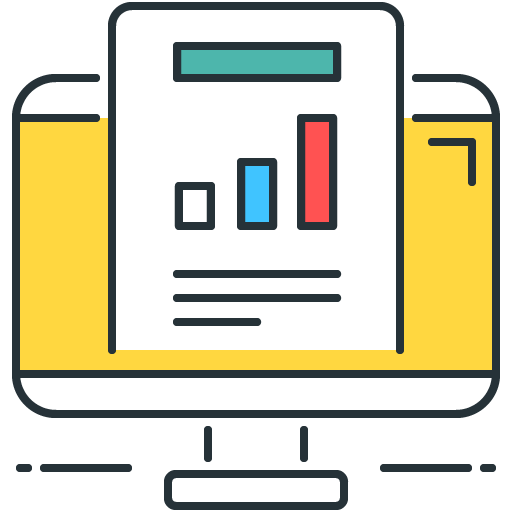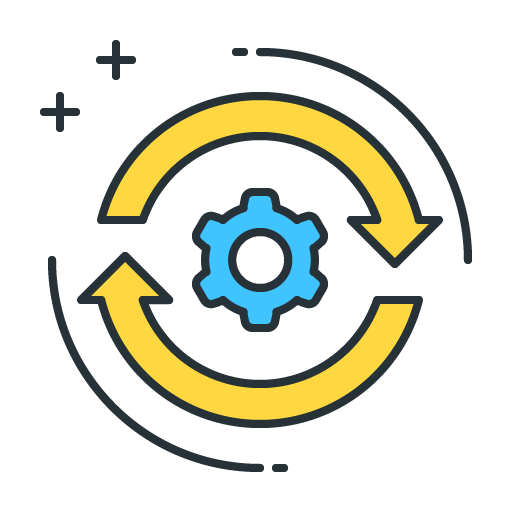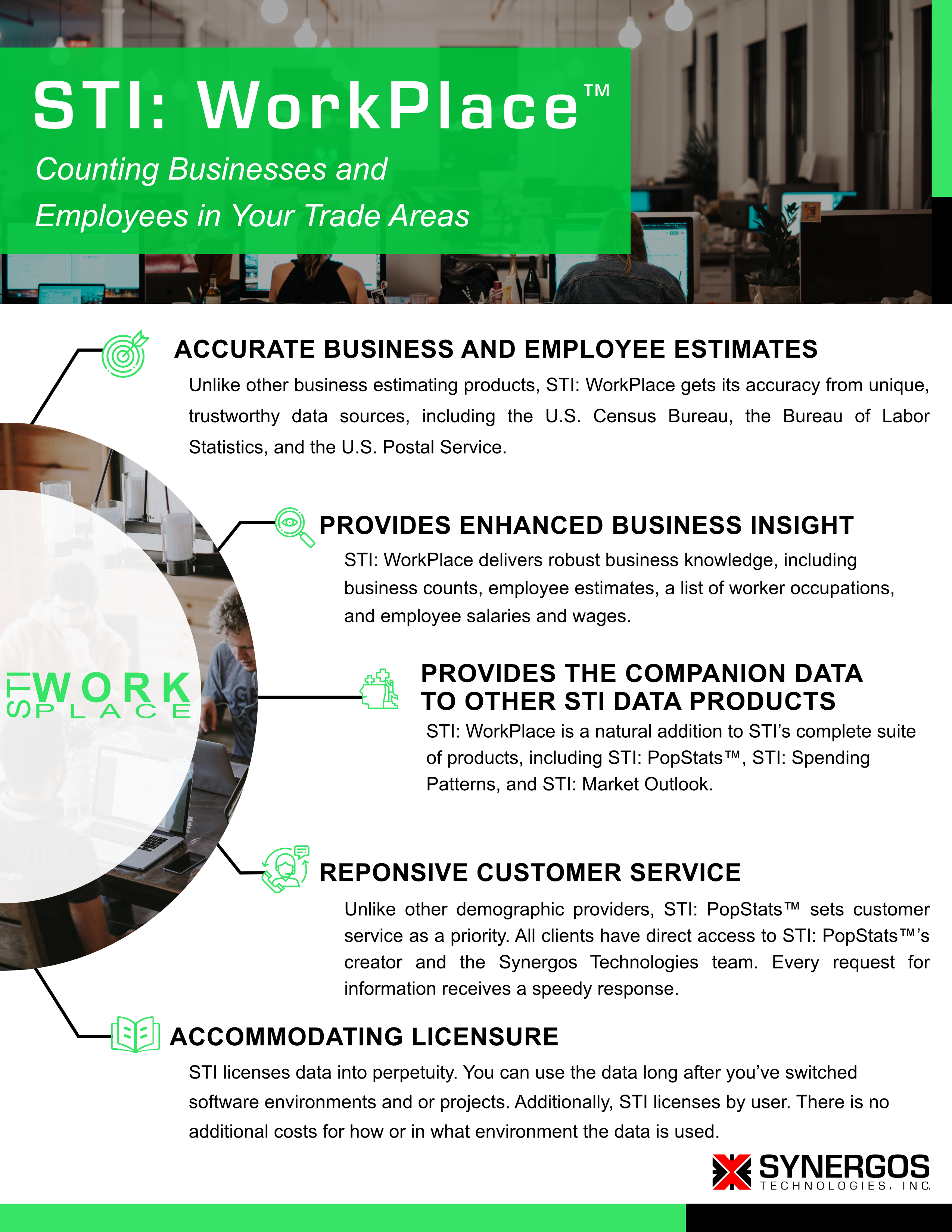STI: WorkPlace™ – Quarterly Business Counts
Counting businesses and employees in your trade area every quarter.
STI: WorkPlace
Counting businesses and employees in your trade area
Consumers come in many shapes and sizes — including those in uniforms, business suits, and hard hats. Yet, too often market researchers do not count working consumers and the businesses in which they are employed. The reason? They have no confidence in most workplace business and employee estimates due to a chronic over-counting problem among many data products.
STI: WorkPlace™ solves this problem by employing new sources of data and an innovative methodology. Just as STI: PopStats™ data delivers dependable population estimates, STI: WorkPlace delivers the most reliable counts of both businesses and employees in today’s U.S. trade areas. What’s more, it uncovers unique data points not available in other data products, including employees’ occupations and incomes (salaries and wages).
What’s more, unlike any other business data, WorkPlace is updated every three months and delivers business insight starting at the block level — so the information is both timely and relevant.
By knowing a trade area’s workplace population, you’ll gain vital information for making smarter decisions. When you choose STI: WorkPlace you can count on dependable businesses and employee estimates, enjoy unique views into business activity by trade area and gain an ideal companion to STI’s entire suite of data products.
Test STI: WorkPlace™ in Your Trade Area
STI: WorkPlace™ Features & Benefits

Gain Confidence in Business Data Sources
Trust that your business data is based on more dependable data sources than are available in any other business data

Access Correct Business Counts
Learn how the presence of businesses in your trade areas could impact your profits

Access Accurate Employee Counts
Determine if the number of workers in a trade area could impact your sales

Discover Unique Worker Insight
Identify the occupations and incomes of workers that correlate to your sales activities

Receive Quarterly Updates
Use the most up-to-date business estimates available — either quarterly, bi-annually, or annually

Obtain Block-Level Insight
Retrieve workplace insight at both the block and block-group levels, for more geographically targeted insight
Enjoy Responsive Customer Service
Receive STI’s industry-leading customer service — the highest in the data industry
STI: WorkPlace™ delivers accurate business and employee estimates
Unlike other business estimating products, STI: WorkPlace gets its accuracy from unique, trustworthy data sources, including the U.S. Census Bureau, the Bureau of Labor Statistics, and the U.S. Postal Service.
STI: WorkPlace™ provides enhanced business insight
WorkPlace delivers robust business knowledge, including business counts, employee estimates, a list of worker occupations, and employee salaries and wages.
STI: WorkPlace™ provides the companion data to other STI data products
WorkPlace is a natural addition to STI’s complete suite of products, including STI: PopStats, STI: Spending Patterns, and STI: Market Outlook.
The business insight provided by STI: WorkPlace gives competitive companies a strategic advantage in today’s challenging marketplace. It allows them to analyze existing and potential trade areas with more dependable information on who works — and spends — in each area.
- STI: WorkPlace™
- Methodology
- Deliverables
Test STI: WorkPlace™ in Your Trade Area
Unleash your research potential and enjoy greater confidence in your research — with today’s leading quarterly population and demographic data.
